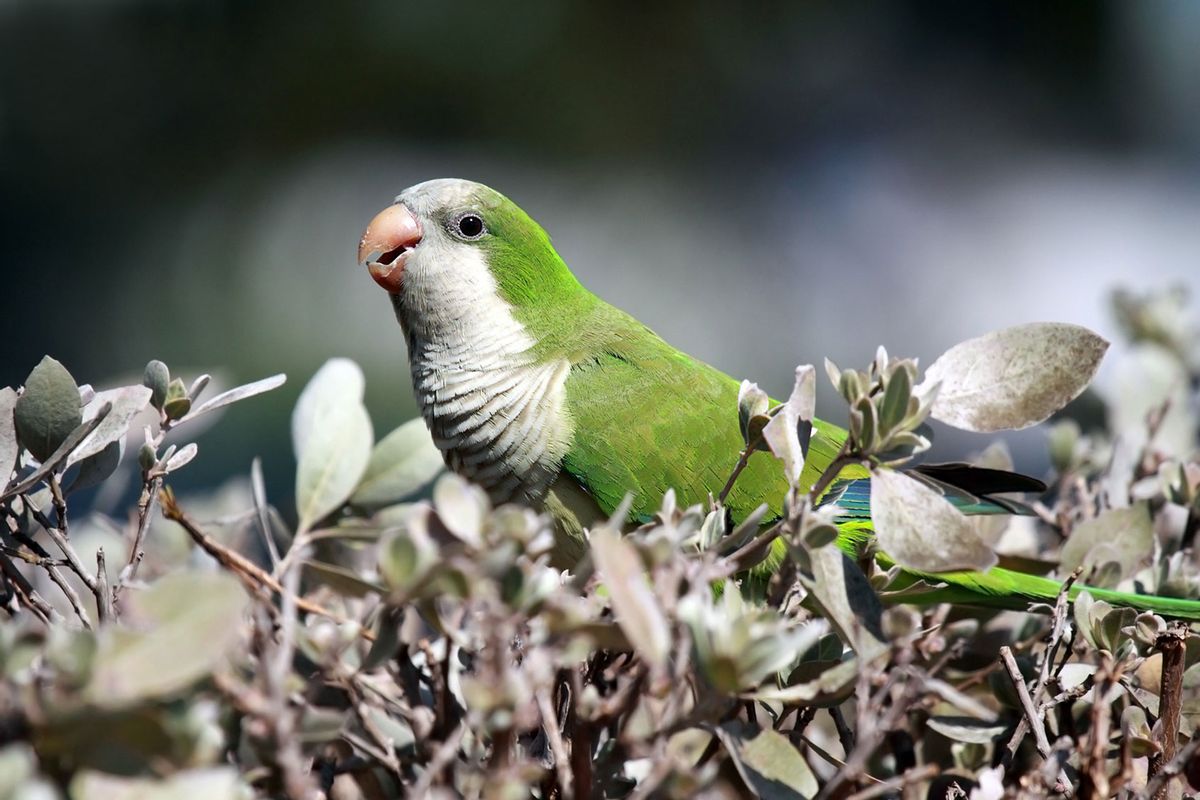Parrots consistently top the charts of the world's smartest animals. Certain species can outperform 5-year-olds on cognitive tasks, others have the ability to learn more than 500 words, and some of the smartest trade "currency," like fancy pieces of metal, for food. Some of these birds can even choreograph their own dance numbers.
A new study published yesterday helps us better understand how these intelligent creatures communicate. Writing in the Royal Society Open Science, researchers studied thousands of monk parakeet (Myiopsitta monachus) vocalizations from hundreds of birds in Barcelona across two years and ran these recordings through a machine learning program that identifies small differentiations in their calls to see what sets individuals apart in a group.
"The voiceprint is this underlying kind of timbre of a voice that you can recognize in humans, and this is the first time that has been shown in another vocal learner."
Previously, it was thought that these birds introduced themselves to other monk parakeets with a sort of "catchphrase" that distinguished their identity. However, after running the vocalizations collected in this study through the program, a team led by Simeon Smeele, a doctoral student at Aarhus University in Denmark, found that the birds actually had "voiceprints" like humans that identify themselves in the group.
"The voiceprint is this underlying kind of timbre of a voice that you can recognize in humans, and this is the first time that has been shown in another vocal learner," Smeele told Salon in a video call. For example, the voiceprint of Robin Williams is how you know it's his voice, even if there isn't video present. "This is what I think could explain how they recognize each other, because it can be stable over very long periods of time."
Artificial intelligence is currently being used to understand how many species, including sperm whales, zebra finches and even our own pet dogs communicate. Just as Roger Payne used recordings of whale songs in the 1960s to mobilize conservation efforts and save these sea giants from extinction, research into animal communication has the potential to spur the public into action to combat climate change.
"Understanding who each other is and how we interact with one another is an important part of human life," said Emily DuVal, Ph.D., a behavioral ecologist at Florida State University, who wasn't involved in the study. "This shows that these birds also have that sort of information that they might be using in their complicated social interactions," she said.
"This is probably a common phenomenon across animals that use vocalizations and live in communities."
Monk parakeets live in complex social groups like humans do, said Erica L. Westerman, Ph.D., an associate professor of biological sciences at the University of Arkansas, who also wasn't involved in the study. Keeping track of which individuals in these groups share the most food, find the best places to nest or are the best at detecting predators can be evolutionary advantageous for these birds to stay alive, she explained.
"It increases the likelihood that you will make it to have offspring and that your offspring will make it to the next generation," Westerman told Salon in a phone interview.
In the study, researchers tested five different types of vocal calls: the contact call, the alarm call, the tonal upsweep (like "trruup"), the growl and the quick quip (like "tja"). Interestingly, the machine learning program only distinguished voiceprints in the former three types of calls.
"I think the reason we didn't find it in the other two is either that they're too short or not tonal enough," Smeele said. "Or because they are used in really close interactions or in sequences, where it's not super important to encode who you are."
This model can potentially be applied to other animals with vocal recognition like bottlenose dolphins, bats and elephants. Future research can also look into how monk parakeets use this information when socializing and whether these voiceprints are recognized by all parakeets in the community or only a circle of close relatives, DuVal said.
We need your help to stay independent
Pet owners who have watched their dogs or cats respond to other pets in the home may not be surprised that animals would have voiceprints. It would have been interesting to test whether these voiceprints were also found in monk parakeets' native habitats in South America, as this species is invasive in Spain, Westerman said. At the same time, there is probably less of a disconnect between domesticated and wild animal communication than might be commonly thought, she added.
"This is probably a common phenomenon across animals that use vocalizations and live in communities," Westerman said. "Because the advantage of being able to identify an individual is huge."

Shares